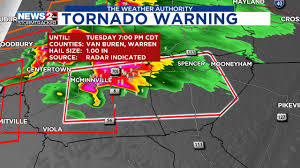The Sound of Sirens
It was just another Tuesday afternoon in Alberta when the familiar sirens broke the calm of the day. Residents quickly turned their eyes to the sky, straining to listen for updates on a tornado warning that had just been issued. For many, the shrill sound was a reminder of nature’s unpredictability and a harbinger of potential disaster.
The Human Toll of Tornadoes
According to Environment Canada, tornadoes spawn about 80 times yearly across the country, a figure that highlights the growing need for awareness and preparedness. In May 2022, a tornado touched down near Barrie, Ontario, causing significant damage to homes and infrastructure. Thankfully, there were no fatalities, but the impact of that event was felt across the community. “Tornado warnings are not just a protocol; they are a lifeline,” said Lisa Morin, a community volunteer who helped with relief efforts in Barrie. “The stories we heard reminded us all how fragile safety can be.”
The Role of Technology in Warnings
In an age of instantaneous communication, tornado warnings are delivered through various channels—TV, radio, social media, and mobile alerts, creating a vital lifeline to members of the community. Recent statistics show that 85% of Canadians receive their emergency alerts on smartphones. This shift has fostered a more informed public, allowing families to take immediate steps to protect themselves.
But technology has its limitations. Not everyone has access to smartphones, especially in rural areas where cellular service may be spotty. The reliance on electronic notifications raises concerns about those who may be left behind. “We have to remember that not everyone gets the alerts in real-time,” says Morin. “It’s crucial for communities to invest in a multi-faceted approach to warning systems.”
Community Preparedness and Response
The sound of a tornado warning can invoke panic, but many communities have turned to preparedness programs to empower residents. Local schools often conduct drills, and neighborhood watch programs now include emergency response training. Social media channels buzz with conversations during storm season, with residents sharing tips and resources.
Amid the heightened awareness and community bonding, some Canadians still express skepticism about the system’s reliability. Comments on social media reveal a mix of fear and frustration, as one user tweeted, “Every time I hear a tornado warning, I wonder—will this be the one that changes everything?” Such sentiments reveal deep-seated anxiety that accompanies weather phenomenon as catastrophic as tornadoes.
Looking Ahead
As climate change continues to influence weather patterns, experts predict a potential rise in severe weather events, including tornadoes. Preparing for such threats will require not only individual readiness but also a collective effort between municipalities and residents to enhance warning effectiveness.
Canada is fortunate to have a robust emergency alert system, but as Lisa Morin aptly points out, “The heart of emergency management lies not just in technology, but in community spirit.” This spirit is what will help turn a moment of fear into an empowered response that safeguards lives in the face of nature’s wrath.

